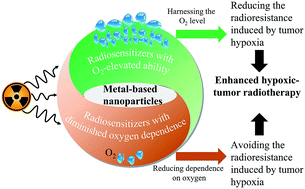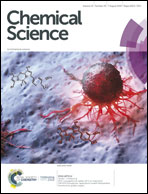Strategies based on metal-based nanoparticles for hypoxic-tumor radiotherapy
Abstract
Radiotherapy (RT) is one of the most effective and frequent clinical cancer treatments. Nevertheless, RT can cause damage to normal tissues around tumors under high-dose ionizing radiation. Inspired by versatile metal-based nanomaterials, great efforts have been devoted to developing nanomaterials with high-Z metal elements as radiosensitizers by depositing more energy into tumors for RT enhancement. However, these metal-based nanomaterial-mediated RTs are highly O2-dependent. Unfortunately, O2 concentrations within the majority of solid tumors exhibit low levels, which seriously hampers the antitumor efficacy of these nanomaterials during RT. Therefore, the development of novel metal-based nanomaterials as radiosensitizers capable of avoiding the radioresistance induced by tumor hypoxia is highly desirable and important. Currently, the most effective approaches to reverse the radioresistance of hypoxic tumors are to introduce nanomaterials with O2-elevating ability by delivering exogenous O2, generating O2in situ, increasing intratumoral blood flow, or reducing HIF-1 expression to harness the O2 level in solid tumors. Besides these, recently, some innovative and simple strategies by employing nanoradiosensitizers with diminished oxygen dependence have also been applied to combat unmet hypoxic challenges, in which nanoradiosensitizers can target tumor hypoxia for selective RT, enhance oxygen-independent ROS generation, or combine with non-oxygen dependent cancer therapies for synergistic treatments. These approaches and strategies provide new avenues for enhanced hypoxic-tumor RT. Nevertheless, an overall review aiming specifically at these strategies is still rare. Herein, we present an overview about recent advances in metal-based nanomaterials for hypoxic-tumor RT, and give a detailed discussion about the design and working mechanisms of these strategies in their application of RT. Finally, current challenges and future perspectives are also pointed out in this field.



 Please wait while we load your content...
Please wait while we load your content...